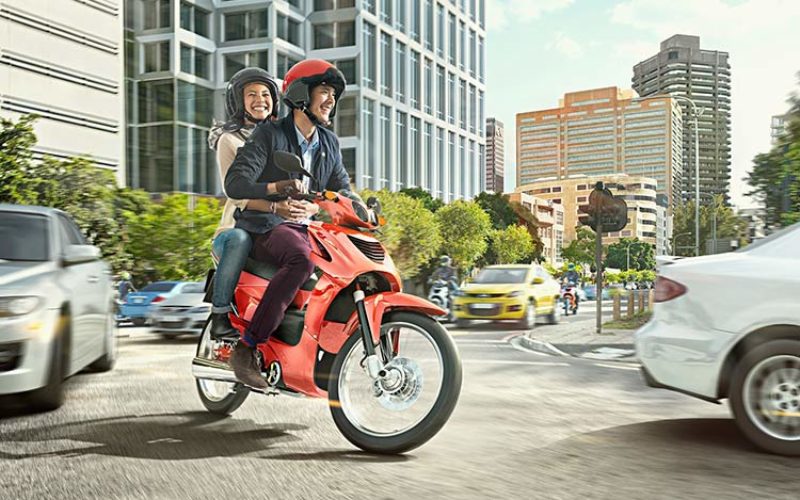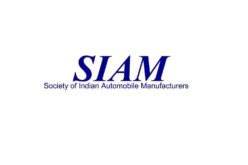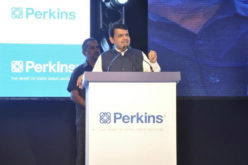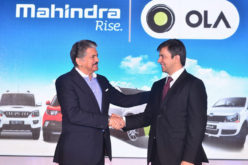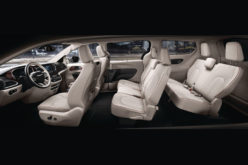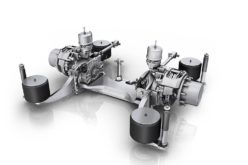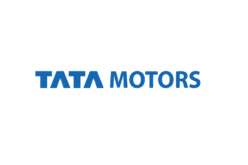- Bosch board of management member Hoheisel: “In 2020, we want to achieve sales of one billion euros in motorcycle technology.”
- Two-Wheeler and Powersports unit has tripled its workforce in under a year.
- Bosch side view assist is the first assistance system for motorcycles.
- More than 160 million motorized two-wheelers will be built worldwide in 2021.
- Since 1995, Bosch has manufactured more than two million motorcycle ABS units.
Yokohama, Japan and Stuttgart, Germany – The Bosch Two-Wheeler and Powersports unit continues to gain momentum in the global motorcycle market. Since the business unit was founded in Japan in April 2015, sales of motorcycle technology have risen by more than 20 percent. By comparison, production volumes for motorized two-wheelers have grown by less than 5 percent over the same period. This success is built on a broad product portfolio: The Two-Wheeler and Powersports unit is the leading supplier of motorcycle safety technology; its side view assist is the world’s first assistance system for motorcycles. In addition, the business unit supplies efficient injection technology as well as smart connectivity solutions and modern display instruments. Around the world, the unit’s 130 associates – three times as many as a year ago – can draw on a worldwide network of several thousand engineers, as well as on the manufacturing capacity of the Mobility Solutions business sector. The unit is well positioned for the future. “In 2020, we want to achieve sales of one billion euros in motorcycle technology,” says the Bosch management board member Dr. Dirk Hoheisel. In the future, Bosch will generate more than half these sales in Asia.
Almost 90 percent of all motorcycles are produced in Asia
Studies indicate that by 2021, the annual global production of two-wheelers should surpass 160 million – roughly one-third more than today. Almost 90 percent of these will be built in China, India, and southeast Asia. They will predominantly be mopeds with up to 250 cc displacement – the most common form of transport across much of Asia. “In emerging markets, motorized two-wheelers are often the least expensive way to get around,” Hoheisel says. At the same time, these vehicles also face the challenge posed by stricter emissions legislation. In Asia, many two-wheelers with internal-combustion engines are still equipped with outdated carburetor technology. In contrast, Bosch offers its electronically controlled fuel-injection system, which can reduce fuel consumption by up to 16 percent depending on the situation. This is Bosch’s contribution to reducing emissions in countries such as India.
Desire for efficiency and safety as a boost for business
Along with a requirement for more efficiency, demand for increased motorcycle safety is growing in emerging markets. In Thailand and Indonesia, for example, some 21,000 people die in motorcycle accidents each year. ABS can prevent one-quarter of all motorcycle accidents that result in casualties. The antilock braking system stops the wheels from locking up, which means the rider remains in control of the motorcycle while braking. This enables riders to react more quickly and without fear in a dangerous situation. Worldwide, more and more countries are promoting motorcycle ABS. Throughout the EU, all newly sold motorized two-wheelers with more than 125 cc displacement must be fitted with an antilock braking system as of 2017. Starting in October 2018, Japan will be mandating ABS for new type approvals for motorcycles with more than 125 cc. Brazil and Taiwan, too, have already passed laws mandating ABS in the future. The issue is also on the political agenda in India and the United States.
A product for each market: from ABS to side view assist
Since 1995, Bosch has manufactured more than two million motorcycle ABS units. This year the company is releasing ABS 10, a variant that is designed specifically to meet the requirements of emerging markets. With its compact dimensions and weighing just 450 grams, this system is easier for manufacturers to integrate into mopeds for price-sensitive customers. “Safety cannot be a question of cost. We are bringing our ABS technology to all classes and markets,” Hoheisel says. For high-performance motorbikes, demand for which is strongest in Europe, Japan, and North America, Bosch developed MSC motorcycle stability control – a kind of ESP for motorcycles – in 2013. By monitoring two-wheeler parameters such as lean angle, the system can instantaneously adjust its electronic braking and acceleration interventions to suit the riding status. This prevents the bike from lowsiding or righting itself when braking in bends. But development doesn’t stop there: with side view assist, Bosch has launched the world’s first assistance system for motorized two-wheelers. When changing lanes, the assistant uses ultrasonic sensors to check for danger in the areas on either side of the bike – areas which are hard for the rider to see.
Connected motorcycles are even safer
The future of the motorcycle is not only safe and clean but also connected. Bosch has two motorcycle connectivity solutions in its portfolio. First, the ICC integrated connectivity cluster is a rider information system that connects motorcycles and smartphones and can be used to operate apps. Second, Bosch uses its CCU connectivity control unit to connect motorcycles with the cloud. This makes it possible to implement functions such as eCall, the automatic emergency call service. If the motorcycle is involved in an accident, eCall automatically places an emergency call, ensuring help arrives more quickly. eCall is not yet mandatory for motorcycles in the EU, but from April 2018 it will be mandatory for all new type approvals for cars and light trucks up to 3.5 metric tons. The CCU can also provide riders with useful information on issues such as potential danger spots on the roads and can help track down a stolen motorbike.


